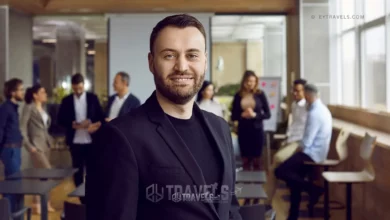7 Essential Problem-Solving Steps You Need to Master
In a world rife with challenges and uncertainties, having strong problem-solving skills is akin to wielding a potent tool in your arsenal. Whether you're a student grappling with complex assignments, a professional navigating intricate work dilemmas, or an entrepreneur facing unpredictable market shifts, the ability to adeptly solve problems can set you apart. It's not merely about finding any solution – it's about mastering the art of problem-solving through essential steps that pave the way for efficient and effective resolutions.
7 Essential Problem-Solving Steps You Need to Master
Imagine approaching each obstacle as an opportunity to showcase your ingenuity and resourcefulness rather than viewing it as a roadblock. By delving into the realm of problem-solving armed with a structured approach tailored to tackle issues head-on, you open doors to new possibilities. This article unravels seven indispensable problem-solving steps that go beyond conventional wisdom, offering insights and strategies that empower you to unravel complexities with clarity and confidence. Step into a realm where challenges are not setbacks but gateways to growth – let's embark together on this transformative journey towards mastering problem-solving mastery.
Understanding the Problem
Before diving headfirst into solving a problem, it is crucial to take a step back and thoroughly understand what you are up against. The first essential step in effective problem-solving is to clearly define and grasp the intricacies of the issue at hand. Imagine trying to put together a complex jigsaw puzzle without seeing the whole picture—understanding the problem serves as laying out all your puzzle pieces before starting to connect them. By taking this initial step, you set a solid foundation for finding an appropriate solution.

When faced with a problem, resist the temptation to rush for quick fixes or superficial solutions. Instead, take the time to break down the problem into its key components. For instance, if you are struggling with time management in your studies or work, consider factors like task prioritization, distractions that hinder productivity, and efficiency bottlenecks. The ability to identify these underlying causes will enable you to address root issues rather than merely treating symptoms, resulting in more sustainable and effective solutions.
To illustrate this point further, think of understanding a problem akin to peeling an onion layer by layer. Each layer exposes new insights and complexities that contribute to the whole scenario. By dissecting problems into their fundamental components, you gain clarity on how different elements interact and influence one another. This deep dive allows you not only to see the big picture but also to zoom in on specific areas that require attention or improvement. In essence, mastering this step empowers you with a strategic mindset that is indispensable in navigating intricate problem-solving landscapes.
Generating Solutions
Once you have a clear understanding of the problem at hand, the next crucial step in mastering effective problem-solving is generating solutions. This phase requires you to unleash your creativity and think outside the box. Consider approaching the issue from different angles and be open to unconventional ideas. By brainstorming without judgment, you allow for a diverse range of solutions to emerge, increasing the likelihood of finding an innovative way forward.
For example, imagine you're faced with a team conflict where members can't seem to agree on a project approach. In this scenario, instead of sticking to traditional methods that haven't yielded results, encourage team members to voice their ideas freely. By fostering an environment that values creativity during solution generation, you might discover unexplored pathways that lead to resolving the conflict amicably.
Remember, during this stage, quantity often breeds quality when it comes to generating solutions. Don't shy away from putting all ideas on the table – even seemingly far-fetched ones. Sometimes, those out-of-the-box suggestions hold the key to unlocking a truly effective resolution. Embrace the opportunity to explore various avenues for tackling the problem before moving on to evaluate and decide on the best course of action.
Problem-Solving Steps: Evaluating Options
Once you have brainstormed a list of possible solutions in the problem-solving process, the next crucial step is evaluating these options. This stage involves a detailed analysis of each potential solution to determine its feasibility, impact on the issue at hand, and the resources required for implementation. For example, if you are facing a budget shortfall in a project, evaluating various solutions might include looking at cost-cutting measures, seeking additional funding sources, or renegotiating contracts with vendors.
It is essential during this evaluation phase to consider both short-term fixes and long-term strategies. While a quick fix might address an immediate concern, a long-term approach could prevent similar issues from arising in the future. By weighing these different perspectives and considering the implications of each option over time, you can make a more informed decision. For instance, when addressing employee morale concerns within a company, short-term fixes like team-building activities could provide immediate boosts while also exploring more substantial changes such as revising organizational policies for lasting improvements.
By assessing all available options based on their feasibility, impact assessments, and resource requirements during this evaluation step, you are better equipped to choose the most suitable solution for the given problem. This comprehensive evaluation process helps ensure that your final decision aligns with your goals and provides the best chances for successful resolution.
Decision Making
Once you have evaluated all available options, the next crucial step in effective problem-solving is making a decision. Decision-making entails carefully selecting the most suitable solution from the pool of ideas generated during the evaluation phase. It's essential to consider various factors like risks involved, potential benefits, and how well each option aligns with your overarching goals or objectives. This thoughtful consideration ensures that the chosen solution not only addresses the current issue but also contributes positively to your long-term plans.
For example, imagine you are leading a project team faced with a critical decision on whether to invest in new technology to streamline processes. In this scenario, your decision-making process would involve weighing the risks associated with implementing new technology against the benefits it offers in terms of efficiency and cost savings. Additionally, considering how well this decision aligns with your project goals and long-term vision is vital for making an informed choice.
By focusing on these key factors during the decision-making stage, you can increase the likelihood of selecting a solution that best suits your needs and maximizes positive outcomes. Remember, while it's important to make timely decisions, taking the necessary time for thorough consideration is equally crucial to avoid hasty choices that might not yield optimal results in the long run.
Implementing Solutions
Once a decision has been made regarding the most suitable solution to a problem, the focus shifts to implementing that chosen course of action. This stage is where careful planning and organization come into play. A well-thought-out plan of action should be developed, clearly outlining each step necessary to execute the solution effectively. For instance, if the problem at hand is optimizing workflow processes in an office setting, the implementation phase would involve creating a detailed timeline for rolling out new procedures.
Assigning tasks and responsibilities is crucial during the implementation phase. By delegating specific tasks to individuals and teams based on their strengths and expertise, you ensure that everyone is working towards a common goal efficiently. For example, if the issue revolves around improving customer service in a retail environment, assigning training sessions to staff members on effective communication skills might be part of the solution.
Setting deadlines and milestones is essential for tracking progress and maintaining momentum throughout the implementation process. Clear deadlines create a sense of urgency and accountability among team members, driving them to stay focused on achieving objectives within specified timeframes. Effective communication channels must also be established to ensure that everyone involved in implementing the solution stays informed about progress, challenges faced, and adjustments needed along the way.
In essence, successful problem-solving does not conclude with making a decision but extends into how that decision is executed. By approaching implementation with careful planning, task delegation, deadline setting, and open communication channels, individuals and teams can navigate through challenges more smoothly while working towards resolving complex issues efficiently.
Assessing outcomes is a critical step in the problem-solving process, as it allows individuals to measure the effectiveness of their chosen solutions and identify areas for improvement. After implementing a solution, it is essential to compare the actual results with the expected outcomes set during the planning phase. For example, in a business setting, if a team implemented a new marketing strategy to increase customer engagement, comparing the post-implementation sales numbers with the projected increase can provide valuable insights into the success of the strategy.
By evaluating outcomes, individuals can gauge whether their problem-solving efforts have led to positive changes or if adjustments are necessary. This assessment helps in determining the impact of the chosen solution on the overall goal or objective that prompted the need for problem-solving. For instance, if a student was struggling with time management and implemented a study schedule to improve productivity, assessing whether grades have improved due to better study habits will indicate if the solution has been effective.
Furthermore, analyzing outcomes not only aids in measuring success but also highlights areas that may require further attention or modifications. If discrepancies exist between actual and expected outcomes, individuals can delve deeper into understanding why certain aspects of the solution did not yield desired results. This reflective process plays a crucial role in enhancing problem-solving skills by fostering a mindset of continuous improvement and adaptability based on real-world feedback.
In short, assessing outcomes serves as a pivotal stage in mastering problem-solving skills by providing valuable feedback on implemented solutions and guiding future decision-making processes. By meticulously comparing actual results with initial expectations and honing in on areas needing refinement, individuals can propel themselves towards becoming adept problems solvers who embrace challenges as opportunities for growth and learning.
Continuous Improvement
Problem-solving is not just a one-time task; it's a skill that thrives on continuous improvement. Just like any other skill, the more you practice problem-solving, the better you become at it. Look at each problem you encounter as an opportunity to hone your skills and learn something new. For example, if you faced a challenge where your initial solution didn't work out as expected, take the time to analyze why it fell short and what alternative approaches could have been taken. By doing this, you are actively engaging in reflection and self-improvement, which are key components of mastering problem-solving.
Embracing failures as stepping stones to success is crucial in the journey of continuous improvement. It's essential to shift your perspective on failures from setbacks to valuable lessons. Imagine a scenario where a project you were managing didn't achieve the desired outcome despite your best efforts. Instead of dwelling on what went wrong, focus on what insights those failures can offer for future endeavors. By embracing failure with a growth mindset, you create space for innovation and improvement in your problem-solving methodologies.
To refine your problem-solving approach continually, consider seeking feedback from peers or mentors. Sometimes an outsider's perspective can provide fresh insights and solutions that may not have crossed your mind initially. Additionally, keeping up with industry trends, tools, and techniques related to problem-solving can equip you with new strategies and approaches to tackle challenges effectively. Remember, enhancing your problem-solving skills is a dynamic process that requires dedication and a commitment to adapt and grow with each experience encountered.
Mastering the Seven Essential Problem-solving Steps
Mastering the seven essential problem-solving steps is not just about finding solutions; it's about developing a problem-solving mindset that can be applied across various aspects of life. By consistently practicing these steps, individuals can enhance their ability to approach challenges with confidence and efficiency. Understanding the importance of clearly defining problems, generating creative solutions, evaluating options, making informed decisions, implementing plans effectively, assessing outcomes, and continuously improving one's problem-solving skills can lead to better outcomes in academia, professional settings, and personal endeavors.
Imagine a student facing a complex math problem. By following these seven steps, they break down the issue into manageable parts, brainstorm different approaches without judgment, evaluate each solution considering feasibility and efficiency, make an informed decision on the best course of action based on set criteria, carry out their plan methodically while monitoring progress closely, assess whether their method led to the correct answer or identify areas needing adjustment. This systematic process can transform what seems insurmountable into a series of achievable tasks leading to success.
Professionals dealing with project setbacks can also benefit from this structured problem-solving approach. When unexpected challenges arise in a work scenario—say a software bug delaying a product launch—if they apply the seven steps diligently by understanding the root cause of the issue through clear communication with team members or stakeholders, creatively exploring possible fixes even if unconventional, evaluating all viable options for impact and resources required before deciding on the most suitable solution aligned with company goals, carefully implementing the chosen fix with attention to detail in execution and effective team coordination—they could turn crises into opportunities for innovation and growth.
In essence, mastering these crucial steps isn't merely about solving isolated problems—it's about building resilience in facing adversity and fostering a proactive approach towards overcoming obstacles. Whether you are an entrepreneur navigating market uncertainties or an individual seeking personal development through refined problem-solving skills, embracing these foundational principles will empower you to confront challenges head-on with strategic thinking and adaptability. Remember that problem-solving is not just about finding answers; it's about cultivating a mindset that thrives on dissecting issues into solvable parts and continuously refining your approach for future success.
Final Tips
As you continue to hone your problem-solving skills, here are three essential tips to keep in mind.
- Firstly, remember the power of collaboration. Sometimes, tackling a problem with a team can lead to more innovative solutions than working alone. Different perspectives and expertise can bring fresh ideas to the table, ultimately enhancing the quality of the solution. For instance, imagine a group project where each member contributes unique insights based on their strengths, resulting in a comprehensive and effective outcome.
- Secondly, don't underestimate the importance of taking breaks during the problem-solving process. Stepping away from the issue for a while can provide clarity and allow your mind to subconsciously work on potential solutions. Whether it's going for a walk, practicing mindfulness exercises, or engaging in a hobby you enjoy, giving yourself space from the problem can lead to breakthrough moments when you return to it. For example, renowned inventors often found inspiration during seemingly unrelated activities before arriving at groundbreaking inventions.
- Lastly, never stop learning and seeking new challenges. Embrace opportunities that push you outside your comfort zone and compel you to think creatively. By continually exposing yourself to diverse problems requiring different approaches, you expand your problem-solving toolkit and adaptability.
Consider joining workshops, enrolling in online courses related to critical thinking or decision-making techniques, or participating in hackathons to sharpen your skills further. Remember that growth happens when you embrace challenges wholeheartedly and persistently seek improvement in your problem-solving abilities.
Generating Creative Solutions
Mastering problem-solving skills through the seven essential steps outlined in this article can truly empower individuals across diverse fields. By understanding problems, generating creative solutions, evaluating options, making informed decisions, implementing strategies effectively, assessing outcomes comprehensively, and committing to continuous improvement, anyone can enhance their problem-solving abilities. Remember that problem-solving is not just about finding quick fixes but about developing a strategic and resilient approach to tackling challenges.
Embrace each problem as an opportunity to learn and grow. Stay open-minded to different solutions, be proactive in decision-making, and always seek ways to refine your problem-solving techniques. With dedication and practice, you can navigate obstacles more efficiently and effectively in both personal and professional realms.
FAQs: Frequently Asked Questions About Problem-Solving
Q: Is problem-solving a skill that can be learned?
A: Yes! Problem-solving is a skill that can be developed through practice and by following structured approaches like the 7 essential steps provided in this article.
Q: How important are creative solutions in problem-solving?
A: Creative solutions play a crucial role in problem-solving as they often lead to innovative approaches that traditional methods might overlook.
Q: How do I know if I have chosen the right solution when solving a problem?
A: The right solution is typically aligned with your goals, feasible within your resources, and has a positive impact on resolving the issue at hand.
Q: Why is continuous improvement emphasized in effective problem-solving?
A: Continuous improvement ensures that you evolve your problem-solving skills over time by learning from past experiences and adjusting your approach based on feedback.
Q: Can anyone become a proficient problem solver with practice?
A: Absolutely! With consistent practice, reflection on experiences, and a willingness to learn from failures, anyone can become proficient at solving complex problems successfully.







